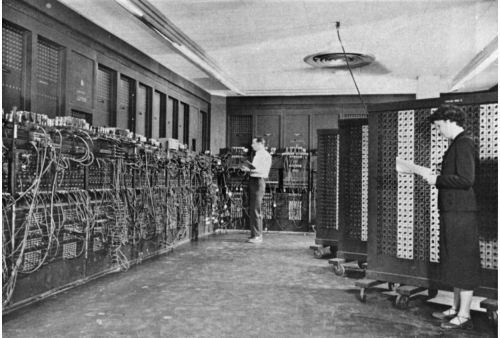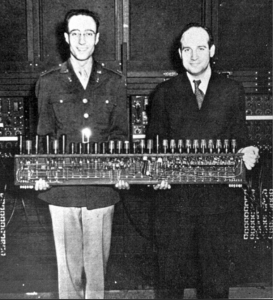People operating complex machines and systems–ships, aircraft, and nuclear power plants, for example–are often dependent on information that has been processed or filtered in some way. The same is true of people exercising their responsibilities as citizens in a large and complex society, inasmuch as they cannot directly and personally observe most of the relevant facts and events. Disasters that occur in complex physical systems can serve as a metaphor to help shed light on disasters–actual and potential–in the political sphere.
On June 9, 1995, the cruise ship Royal Majesty was on a routine voyage in good weather. The vessel was equipped with GPS, which displayed latitude and longitude position…which the crew diligently plotted..and also drove a moving map overlaid on the radar scope.
Unfortunately, the information being displayed and plotted bore little resemblance to the actual reality.
As the gray sky turned black veil, the phosphorus-lit radar map with its neat lines and digital indication seemed clearer and more inviting than the dark world outside. As part of a sophisticated integrated bridge system, the radar map had everythingfrom a crisp radar picture, to ship position, buoy renderings, and up to the last bit of data anyone could wantuntil it seemed that the entire world lived and moved transparently, inside that little green screen. Using this compelling display, the second officer was piloting a phantom ship on an electronic lie, and nobody called the bluff.
The bluff was finally called by reality itself, at 10 PM, when the ship jerked to the left with a grinding noise. It was hard aground on the Rose and Crown Shoal, and could not be backed off.
It was quickly determined that the cable to the GPS antenna had come loose, and the system was not actually obtaining the real, current positions. The captain ran to the LORAN unit, a completely separate electronic navigation system. The position accurately displayed on the LORAN differed from the displayed GPS position by 17 miles.
The GPS unit had in fact honestly disclosed its lack of current information: it did this by displaying the characters ‘DR’…for Dead Reckoning, ie, extrapolating the current course and speed..but the annotation appeared in small characters and was not noticed. The crew thought they were getting an actual portrayal of the current reality, rather than an estimate that would progressively become a guesstimate with the passage of time.
To use the term which has become common in media and political circles, the GPS and its associated display units were creating a convincing narrative…a narrative so convincing that no one, evidently, took the trouble to cross-check it with the LORAN, or to do a celestial fix.
How many American citizens live in a media and information environment which is as closed and as convincing as what the crew of the Royal Majesty was seeing on their bridge? Consider how quickly overwhelming media narratives were put together concerning, for example, the Hunter Biden laptop or the murders of the women in Atlanta. In most such cases, you could watch CNN, MSNBC, and some of the old-line tv networks, you could listen to NPR, you could look at the memes being circulated on social media–and they would all be telling you the same story, an overall narrative which for most people will be as consistent and as convincing as that phantom world displayed on the Royal Majesty‘s radar scope and plotted on the paper charts was that ship’s Second Officer.
As disasters go, the Royal Majesty affair was a fairly minor one: embarrassing and expensive, but no one was killed or injured. Here’s a case which was much worse–the approach of a Delta Airlines flight into Boston Logan Airport, on July 31, 1973.
At 11:40:07, the Captain advised the First Officer, who was doing the flying for this approach:
You better go to raw data. I don’t trust that thing.
“That thing” was a Flight Director, an instrument which displays the calculated actions needed to follow a desired flight path. Both Captain and the FO had become concerned about indications on this instrument which didn’t seem to make sense.
It was too late. 25 seconds later, the plane slammed into the seawall. There were no survivors.
The NTSB determined that the Flight Director’s ‘mode’ switch was incorrectly set: while the Captain and the FO believed it was displaying the calculated actions required for the airplane to follow the Instrument Landing System radio beam down to the runway, it was actually doing no such thing. “Raw data” refers to the display of the plane’s actual, physical vertical and horizontal deviation from where it should be on the ILS beam…and would have shown that the airplane was not where it needed to be. The Raw Data was not, however, so prominently displayed on the instrument panel as were the Flight Director commands.
Convincing displays, convincing narratives, can be very dangerous. New information tends to be absorbed into the overall picture. When the navigating officer of the Royal Majesty observed the radar reflection of a buoy on his radar screen, and, shortly thereafter, the passage of a buoy was reported on the ship’s port side, it confirmed in his mind that it was the ‘BA’ buoy, which marks to entrance to the Boston traffic lanes…and the whole GPS-derived picture became even more convincing. But it wasn’t really BA–it was actually the Asia Rip buoy, anchored to a sunken wreck, which marks the Rose and Crown Shoal.
In the political/media sphere, the misleading narratives that are convincingly presented are not the matter or mechanical or human error, they are a matter of human design. Some of the people and organizations propagating these narratives know they are false, some would rather–for career or social reasons–not think about it too deeply, and some actually believe the narratives. It happens on both/all political sides, but happens a lot more, and more effectively, on the Left, because the Left/Woke dominance of media is so nearly complete.
The pilot and copilot of Flight 723 had only a matter of seconds to question and cross-check the ‘narrative’ that they were seeing on their Flight Director. Citizens, operating in the political/media sphere, have less time pressure…but the time available is not infinite. Multiple sources of information are more available than at any point in history–but the Narrative of the like-thinking media and its influence strategies is overwhelming, especially for people who don’t have a lot of time to follow political matters. Confirmation bias, too, plays a strong role.
Will a sufficient number of people, metaphorically check the displayed GPS position against the LORAN, or check the Flight Director command bars against the raw localizer and glideslope data? And will they do so before it is too late for recovery?
(More on the Royal Majesty incident at my post here. Detail on the Delta Flight 723 accident is provided in the NTSB report.)

